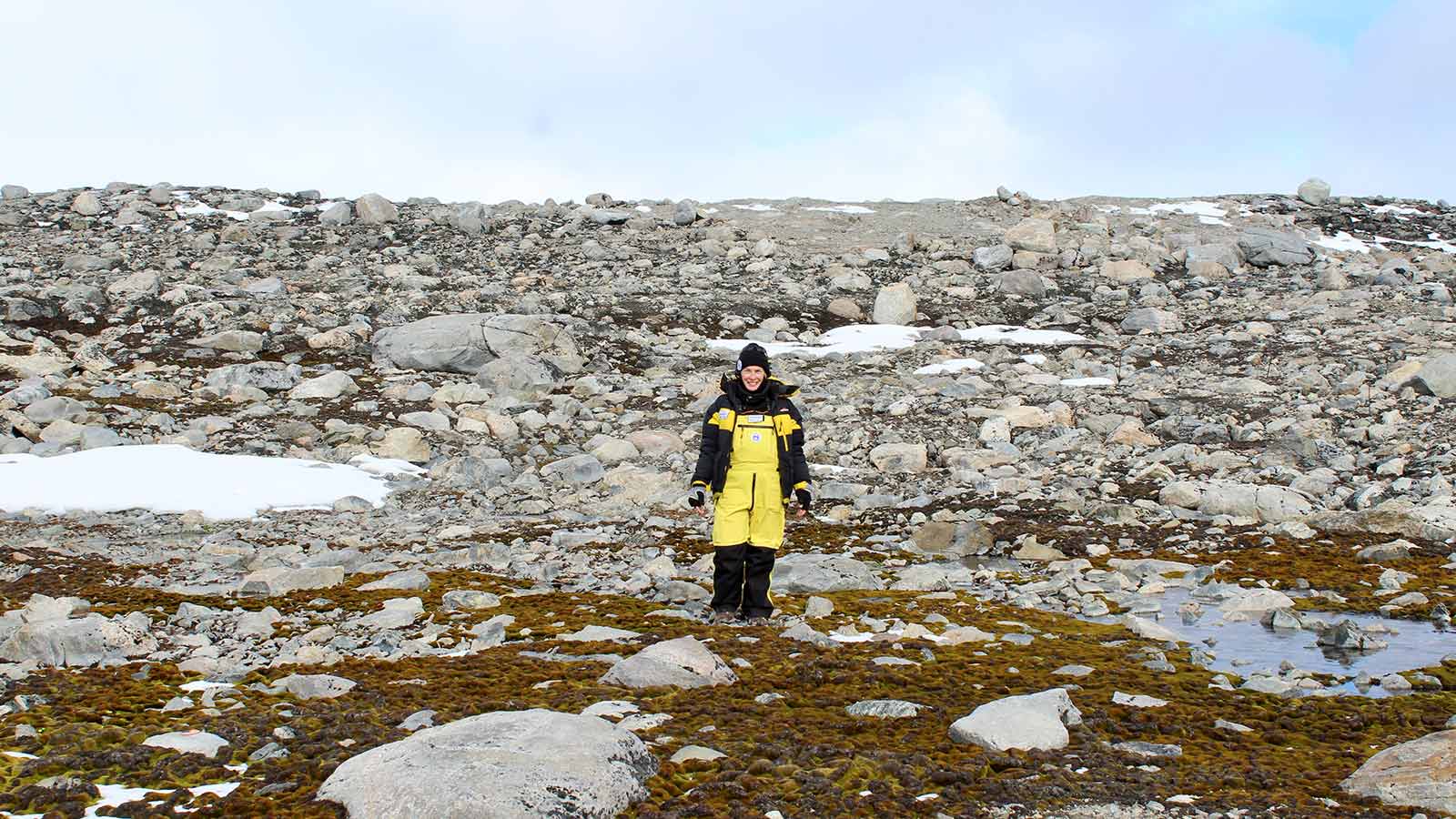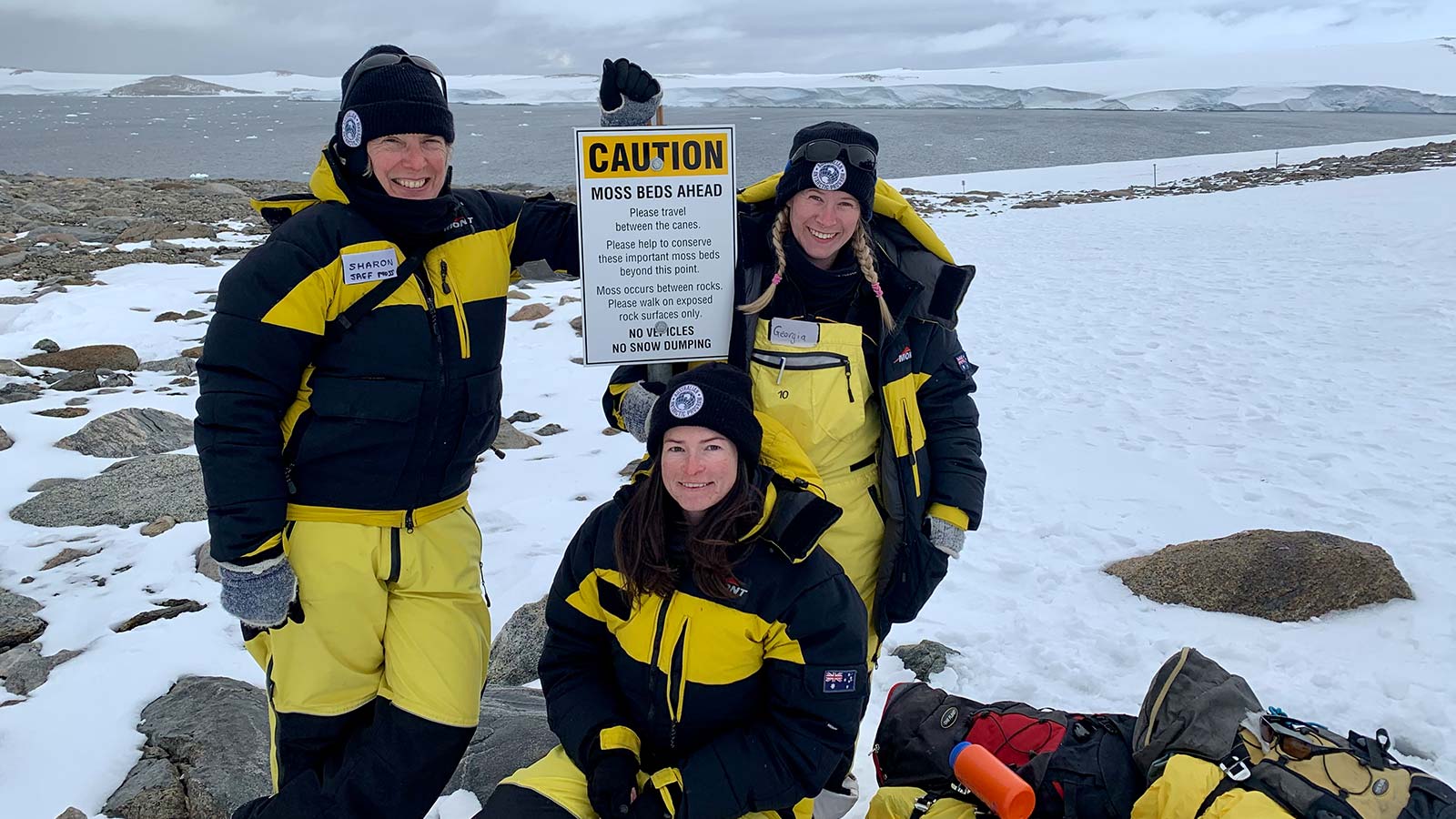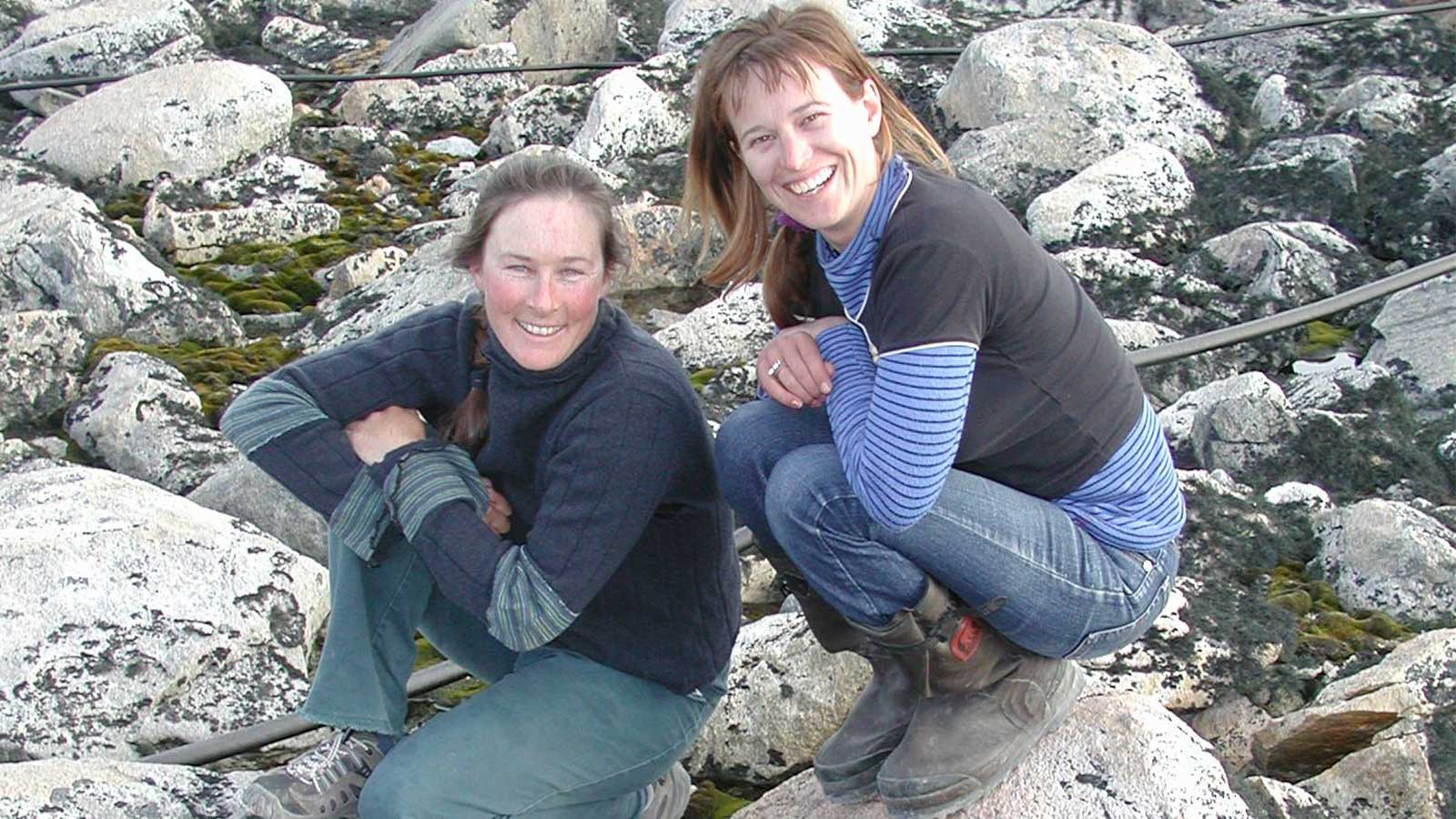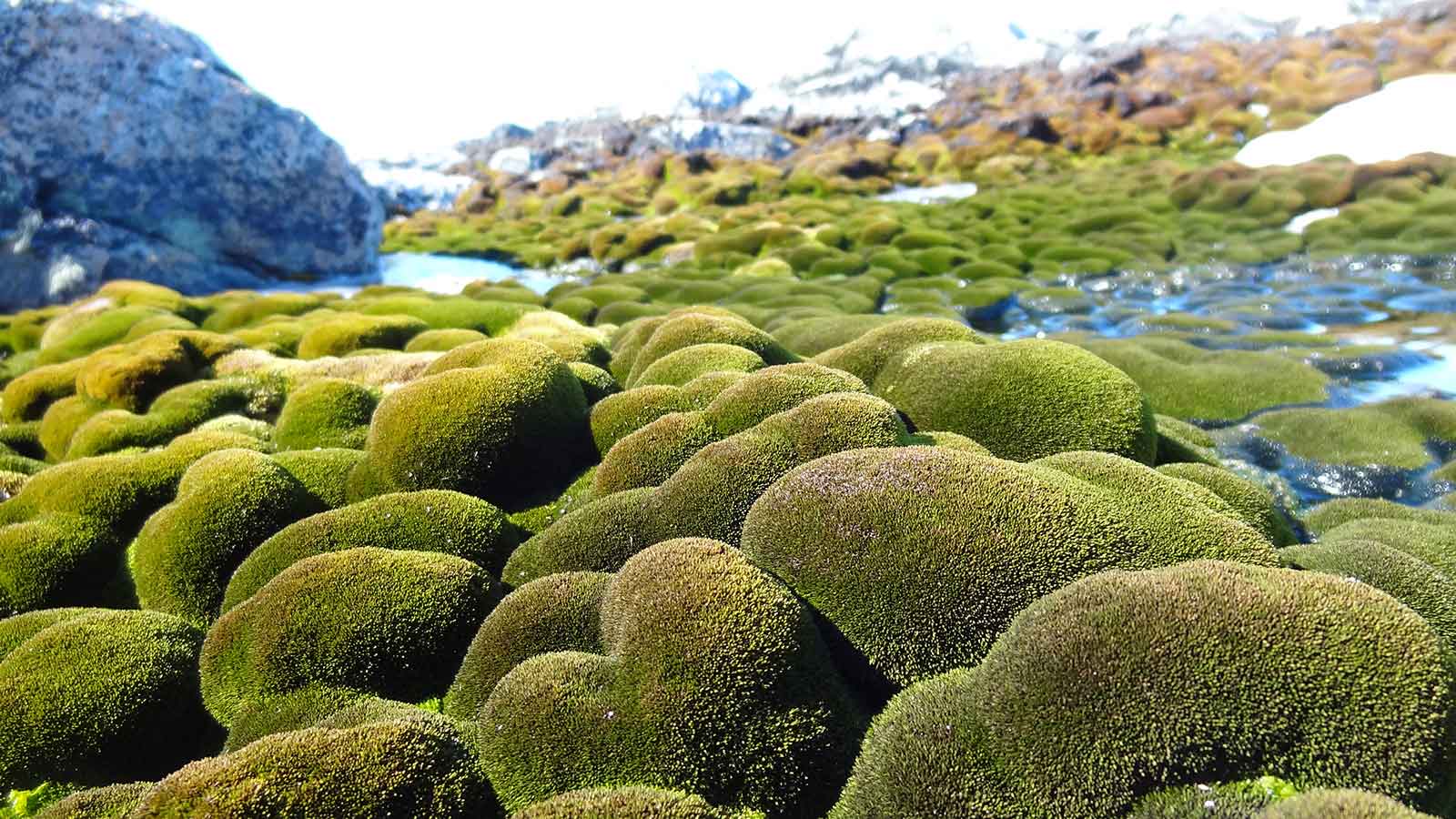Among ancient moss forests
Observing a quarter-century of change
This is a shortened version of the original article published in the Griffith Review.
In February 2022 we had just completed intense work monitoring the moss beds in and around Casey Station, Antarctica.
This trip marked twenty-five years since I first went to Casey. In 1996 I was a newbie to this field, seeing Antarctica through fresh eyes. This time I was leading a team of six early career researchers as part of the new Australian Research Council Special Research Initiative: Securing Antarctica’s Environmental Future (SAEF).
Despite frequent visits to both East Antarctica and to the peninsula, each trip is exciting, and this year was particularly special, seeing the continent through the eyes of these next new researchers, some of whom were making their own first trip. This next generation of scientists are such powerful advocates for their research, passionate about why it is important and determined to make a difference.
Casey Station is almost 4,000 kilometres away from Hobart, roughly level with the longitude of Perth. It is home to some of the most extensive moss beds on the Antarctic continent and has two Antarctic Specially Protected Areas. These are areas that have been closed off and can only be visited with a permit – in this case to protect their rich flora.
Green is unexpected in Antarctica, and the sheer exuberance of the Casey moss beds always takes my breath away. Nestled in among the grey, black, yellow and pink rocks and the endless white ice are oases of green moss turfs; they surround calming blue lakes or skirt babbling brooks. The moss is contorted into ridges and valleys by the constant freeze-thaw of the conditions it experiences. On a micro scale it resembles alpine landscapes with green, moss-covered valleys, rising to hill tops covered in colourful, and sometimes hairy, lichens and topped by dramatic quartz micro-tors that stand just a few centimetres high. When the low evening sunlight streams over the larger of the moss beds, they appear intensely vibrant. Some mosses look like tiny spikey asparagus shoots while others have the sensuous appearance, and touch, of velvet.
I first went to Casey as a new lecturer from the University of Wollongong. My introduction to Antarctic science had been serendipitous; I was working on pigments that plants produce to protect their leaves from too much light. Talking at a conference about the role of leaf pigments in young rainforest leaves, which are often pink or red – like the pink flush of Syzygiums (lilly pillys) – the biologist Adele Post came up to me. ‘If you are interested in red pigments, you should study Antarctic mosses,’ she said. ‘They go red in summer.’
I was instantly intrigued. Could this be an example where increased ultraviolet light from the ozone hole was causing Antarctic mosses to make their own sunscreens? By training, I’m a biochemist and physiologist, and I am interested in how plants work. Antarctic mosses are fascinating in this respect because they can survive in extreme conditions.

And so I did what scientists do: I designed an experiment to test my hypothesis and applied for an Australian Antarctic science grant to fund the work in 1995. It was my first successful application. From 1996, it gave me two berths to Casey for the next three summers, starting with that first three-month trip. I went with a young volunteer, Jane Wasley, who later became my first PhD student and so began her own career in Antarctic science. Starting that first summer, Jane brought an ecological perspective to our research. Her interest in how water and nutrients were driving moss distributions was further developed through her PhD to become the second major theme in our research.
Like other plants, Casey’s lush green moss beds need water, nutrients and light for photosynthesis. They are extremely hardy and I like to think of them as true Antarcticans. The plants and the minute animals that live in these mossy forests are all freeze-tolerant and they thrive despite having less than three months a year in which to grow. While most of the charismatic megafauna, like penguins and seals, come for the summer to breed and feed, they leave for winter. Mosses tolerate up to nine months a year dried out and frozen under snow. They then manage to grow during the short summer season when ice melts and freshwater is available. Their dark pigmentation allows them to absorb sunlight and warm up, like basking reptiles. This means moss surface temperatures are frequently above 20 degrees Celsius, despite the air temperature rarely getting above 2 degrees. This pigmentation also helps them melt the snow above them – essentially they warm it from beneath – and this provides them in turn with valuable water. In locations where conditions are especially tough, Antarctic mosses can survive under quartz rocks. They grow in these mini glasshouses protected from the harsh winds and extreme temperatures.
Our work has shown that between 3,000 to 8,000 years ago, these moss beds were nesting sites for Adélie penguins. The evidence for this comes from tell-tale signs: hills covered in graded stones, all the size that could be transported in an Adélie penguin’s beak; fragments of eggshells; the bones of long-dead penguins and penguin poo – like an ancient assemblage of blood and bone meal. This freeze-dried ancient guano left behind by birds years ago promotes current plant growth, which provides us with clear evidence that things do not degrade in Antarctica’s cold conditions. Once you know what to look for, you can see these Zen gardens across the Windmill Islands –the region where Casey Station is situated – and this past prime real estate for penguins now supports lush moss beds decorated with rocks and lichens. Occasionally, when we are working in the moss beds, an Adélie penguin will wander over. To everyone’s delight, the penguins are unaware of the distance rules for approaching wildlife imposed on human visitors and will come within metres of us to check what we are up to. I think of these visits as confirmation of place and belonging, as if the penguins are responding to the stories the landscape tells still.

To live briefly on an Antarctic station is to be part of a small community predominantly made up of trades people, all highly skilled in their own areas and all usually very interested in the environment. We’ve made posters for the mess hall, given talks and held science open days.
One of the most frequent questions we are asked on station is how the mosses are responding to climate change. When we began our moss journey in the late 1990s there was no long-term monitoring of the mosses underway, which meant we couldn’t really give an answer.
But Jane’s PhD research highlighted that this lack of long-term data represented a fundamental gap in knowledge about Antarctic terrestrial ecosystems, not just at Casey but all over the continent. So we were delighted when the Australian Antarctic Division (AAD) asked if we could develop a State of the Environment (SOE) indicator for the mosses. This would be the single, biological indicator in a sea of physical parameters that were already being collected for Antarctica, such as data points for temperature and windspeed trends.
Physical factors are easier to count in real time, and these measurement processes are easy to automate: we already have thermometers and aeronometers positioned at metereological stations around the world collecting the climate data that informs our daily weather forecasts.
Jane Wasley and another student, Johanna Turnbull, set up a pilot site in 2000 and installed two SOE monitoring sites in 2003. One is in a specially protected area next to Casey Station in a site that is recovering after disturbance by station operations in the 1970s and ’80s; the other is a more pristine site to the south at Robinson Ridge. We have been resurveying these sites every few years since, whenever access and logistic support has been available.

Given how slow mosses grow, I didn’t really expect to see much change before I retired, but we still thought it was an important thing to establish a baseline of knowledge for the future.
Through our own work, we know now that the Casey moss beds are drying out as a result of climate change – the process driven by ozone depletion and global heating.
In 2003 we started off with lush green moss beds. By 2008, extreme climatic events had turned them almost uniformly red – thanks to the production of the pigmentation that had originally lured me to Casey. Over the next five years, some moss recovered to verdant green health but other patches have continued to show declining health, changing from red to brown to grey. Some are now starting to be overgrown with lichens. So despite predictions – made by our team and by the Intergovernmental Panel on Climate Change (IPCC) – that terrestrial community change in Antarctica would be slow and difficult to detect, we now know these are dynamic communities that respond to extreme events in the same ways that other ecosystems do.
These results spurred us to investigate how old the mosses are, which led us to discover that the Windmill Island communities are old-growth moss forests. These same plants have been growing for hundreds of years, since before what’s known as the ‘heroic’ age of human exploration and exploitation in Antarctica, from the late nineteenth century to the end of World War I. We know too that they preserve a signature of past climate in their tiny stems like tree rings, speaking their own history of place to us. And we know that moss species are on the move in Antarctica, with species that prefer dry conditions moving down into drying areas which were previously too wet for them. These Antarctic moss communities were one of nineteen communities in Australian Territories identified as being at risk of ecosystem collapse in a landmark study published in 2021.
My team’s work has rewritten our knowledge of East Antarctic ecosystems and has informed recent IPCC and United Nations Environment Programme reports. It also continues to inform Australia’s SOE reports every six years, while being reported to other parliaments across the world as part of their treaty obligations. It has proved to be an area where Australian science leads the world.
Yet despite this, monitoring goes through periods when it isn’t fashionable. This contributes to a critical disconnect between grant schemes funding what’s ‘cutting-edge’ science and the need for monitoring to be consistent over time. Grants last between three and five years, which is an insufficient window to support long-term monitoring. Every five years, we have had to reapply for funding to undertake the next set of observations and measurements. Sometimes we were successful, other times not. And each project we submitted would be peer-reviewed and assessed against changing criteria that usually did not emphasise the importance of baseline monitoring. Weeks were spent writing grants – and then rewriting them if we were unsuccessful – with new ‘innovations’ introduced every time so that a project could be seen to be novel and cutting edge, even while it maintained the core monitoring components required for the consistency of the long-term records.

When we were asked to start the SOE project in the early 2000s, SOE monitoring was in fashion. Twenty years later, in 2021, the O’Kane Review into Australia’s Antarctic science recommended the development of an East Antarctic Monitoring Program as a key component of Australia’s approach, and so monitoring once again became important. But we have faced real difficulties getting berths on the station and funding to support collection and analysis of these data in the intervening twenty-two years.
To some extent, this is the life of the scientist, and maybe the advances we have made in our research more broadly would not have happened without that constant pressure to innovate and rethink our grants. But the danger is that long-term observations such as these are lost because researchers give up the hunt for support. . As a consequence, we now have data from 2003, 2008, 2013 but not 2018: our latest data set was collected in 2022 – exacerbated by Covid delays from 2020. This represents only a fraction of the lifetime of these old-growth moss beds.
And while monitoring biodiversity is important, it is also important that we are collecting these data for a purpose. As scientists we do not want to document the decline of another ecosystem only for that information to be published but ignored. I want this knowledge to be used to prevent further damage, to underpin action to prevent further the climate damage and to inform better management of Antarctic ecosystems. One missing part of this equation – and one we want to address within the new SAEF program – is what we do with this data as custodians of these precious ecosystems?
We need to ensure that this is information of value.
What I love about Antarctic research is the internationality and the interdisciplinarity it allows. These connections have allowed me to embrace new interdisciplinary techniques to answer questions about Antarctic terrestrial communities. We have developed new techniques, including the use of radiocarbon in the atmosphere, to date Antarctic mosses. When atmospheric nuclear testing created a bomb pulse in radioactivity in the mid 1960s, I was being taken on Ban the Bomb marches in London by my parents and the Casey ‘Tunnel’ – the first Australian station on this site, and the precursor to the current base – was being built. The nearby mosses took up that extra radioactivity, effectively time stamping 1965 in each moss shoot. Using this marker, we can tell how old the mosses are and how slowly they grow (between one and three millimetres a year). Using stable nitrogen isotopes, we can tell where the mosses get their nutrients from – whether it’s from gaseous ammonia that wafts on the wind from nearby penguin colonies or from ancient freeze-dried gauno deposited thousands of years ago. These isotopic signatures are also preserved in older herbaria specimens, so in future we can analyse samples collected by Joseph Hooker or Douglas Mawson as they explored the South Hemisphere in the mid nineteenth and early twentieth centuries. Using other stable isotopes of carbon, we can tell how wet or dry conditions were when a specific part of the plant was photosynthesising and growing. In this way, mosses are like mini coastal ice cores, slowly accumulating carbon and recording the Antarctic environment as they grow.
Once we realised that our long-term monitoring was revealing rapid changes in moss health, we needed a way to scale our techniques to encompass the whole moss bed. Working with the TerraLuma group from the University of Tasmania we have used drones to map the moss beds at fine scale (down to square centimetres) and special sensors to investigate moss-health changes over time. Some of these techniques can also be applied using satellite data – although at closer to a square metre, the pixel size is often too large for it to be useful. But mapping with drones is ideal: it reduces the need to enter moss beds, thereby reducing the chance of damage to these ancient communities. Once we optimise these sensors and their image analysis the chance to check these communities frequently and non-invasively will open up. Perhaps in the future our sampling could potentially be performed by drones – with data from our original low-tech monitoring program still providing valuable ground truth to validate data collected by any future sensor technologies.
Australia’s claim to 42 per cent of the Antarctic continent comes with a responsibility to protect the region. our work helps to highlight how the impacts we cause in the rest of the world – from nuclear testing to ozone depletion to climate change – affect the whole planet, including these tiny plants that grow so remotely. Increasingly, our work is aimed at providing environmental managers with the tools and solutions to protect this diversity. Given Antarctica’s crucial role in the Earth system, it also emphasises the need to take action on climate change.
Sharon Robinson is a Distinguished Professor in the School of Earth, Atmospheric and Life Sciences at the University of Wollongong, and deputy-director science implementation of the Australian Research Council Special Research Initiative, Securing Antarctica’s Environmental Future Program. She is currently a member of the Environmental Effects Assessment Panel of the United Nations Environment Programme, and a faculty member and science theme leader for the Homeward Bound 2019 women’s leadership program.